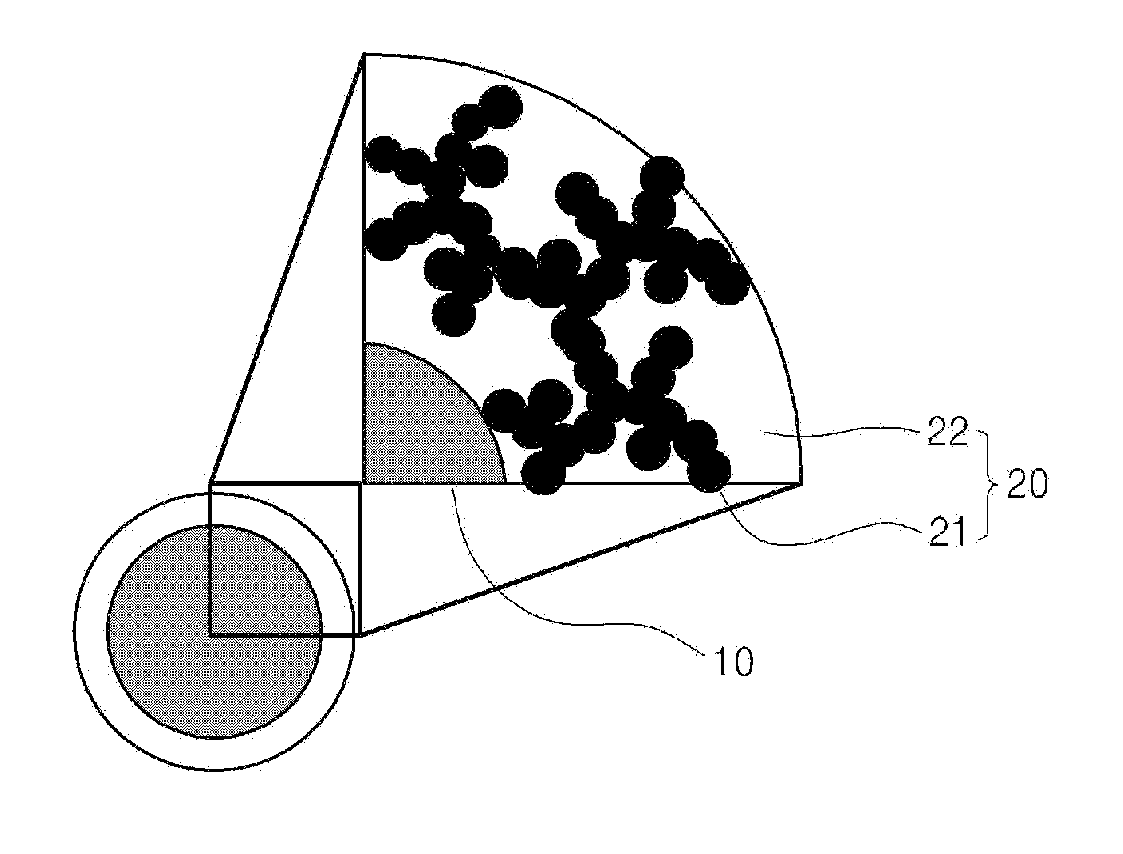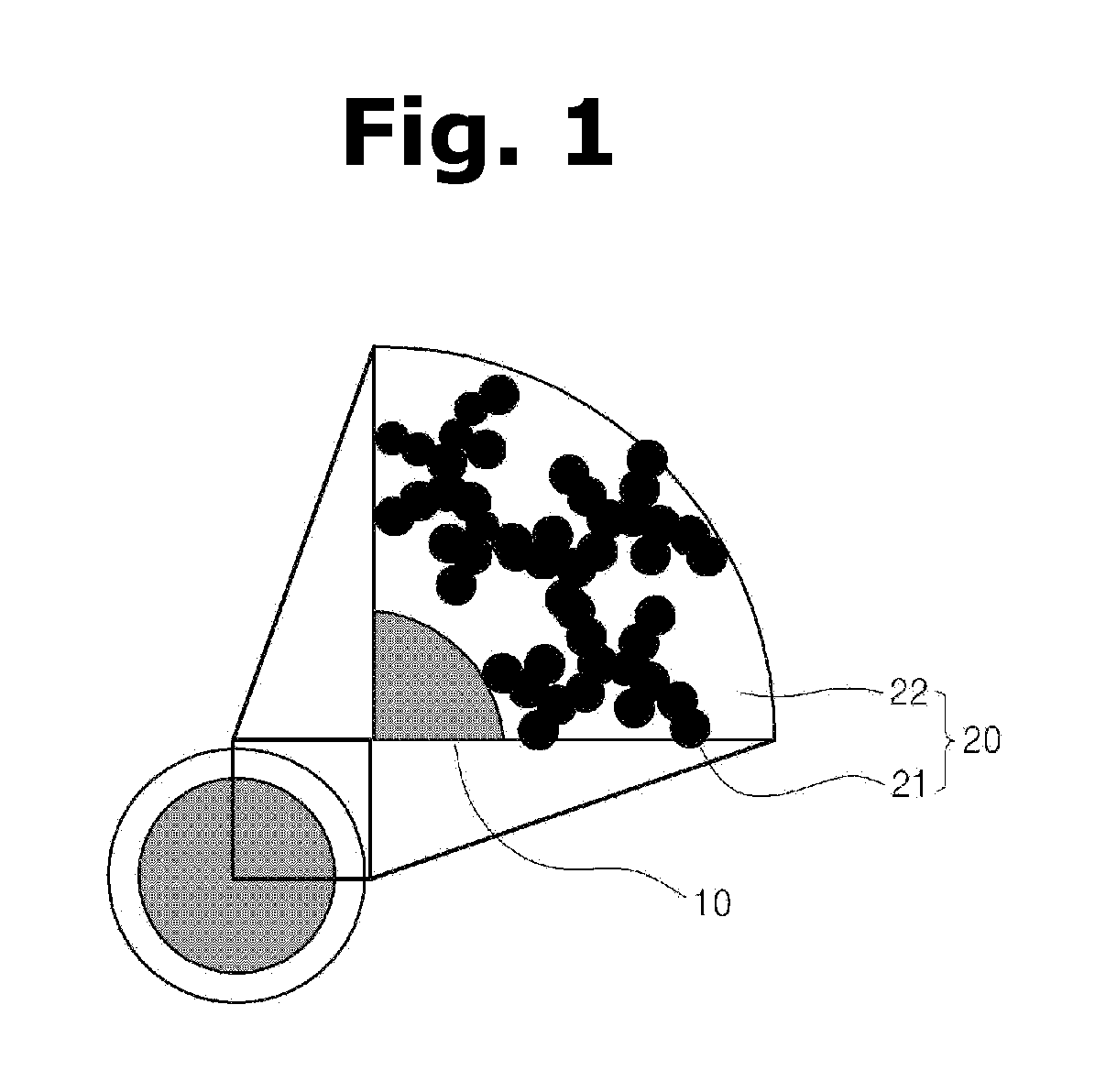Anode active material for lithium secondary battery and method for preparing same
a lithium secondary battery and anode active material technology, applied in secondary cells, battery service/maintenance, cell components, etc., can solve the problems of deterioration in life, obstacle to practical use, and deterioration of silicon cycle properties, so as to improve the conductivity of contact sites and improve the stability of charg
- Summary
- Abstract
- Description
- Claims
- Application Information
AI Technical Summary
Benefits of technology
Problems solved by technology
Method used
Image
Examples
example 1
[0097]Preparation of Anode Active Material for Secondary Battery
[0098]Polyacrylic acid-polyacrylonitrile block copolymer was synthesized through reversible addition-fragmentation chain transfer using polyacrylic acid and polyacrylonitrile. In this case, polyacrylic acid has a number average molecular weight (Mn) of 4090 g / mole, and polyacrylonitrile has a number average molecular weight (Mn) of 29370 g / mole. 0.25 g of Polyacrylic acid-polyacrylonitrile block copolymer was mixed into 44.75 g of N-methyl-2-pyrrolidone (NMP), the first dispersion medium. To the mixed solution, 5 g of silicon particles having the average particle size of 50 nm was dispersed to prepare slurry. In this case, the distribution characteristics of silicon was determined via dynamic light scattering method (instrument: ELS-Z2, Otsuka Electronics, Japan), and the result shows that D50=120 nm.
[0099]The first carbon source pitch (QI: 4 wt %, SP: 30° C.) 120 g was mixed and dispersed in 34 g of the slurry, followe...
experimental example
[0109]Charge and discharge experiments were conducted under the following conditions for the secondary batteries prepared in Example 1 and Comparative Examples 1-4. Assuming 300 mA per unit weight as 1 C, charge condition was controlled at a constant current with 0.2 C to 0.01 V, and constant voltage with 0.01 V to 0.01 C, and discharge condition was determined at constant current with 0.2 C to 1.5 V.
[0110]The discharge capacity retention rates after 10 cycles were compared with the initial discharge capacity, and converted to a percentage (%). The results are shown in Table 1 below.
TABLE 1Com-Com-ComCom-parativeparativeparativeparativeExample 1Example 1Example 2Example 3Example 4Discharge9586838755capacityretentionrate after 10cycles (%)
[0111]As shown in Table 1, since the secondary battery prepared in Example 1 contains carbon black in the shell layer of the anode active material, the conductivity of the anode active material is increased, and the contact sites conductible between...
PUM
| Property | Measurement | Unit |
|---|---|---|
| diameter | aaaaa | aaaaa |
| temperature | aaaaa | aaaaa |
| temperature | aaaaa | aaaaa |
Abstract
Description
Claims
Application Information
 Login to View More
Login to View More - R&D
- Intellectual Property
- Life Sciences
- Materials
- Tech Scout
- Unparalleled Data Quality
- Higher Quality Content
- 60% Fewer Hallucinations
Browse by: Latest US Patents, China's latest patents, Technical Efficacy Thesaurus, Application Domain, Technology Topic, Popular Technical Reports.
© 2025 PatSnap. All rights reserved.Legal|Privacy policy|Modern Slavery Act Transparency Statement|Sitemap|About US| Contact US: help@patsnap.com


